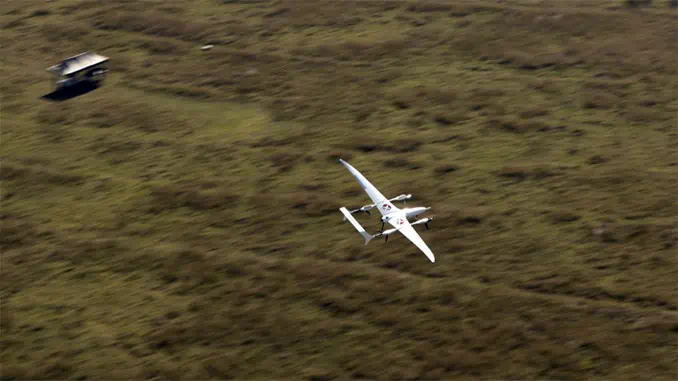
H3 Dynamics is partnering with Carbonix to begin development and production on the first Australian hydrogen-electric Vertical Take-Off and Landing (eVTOL) UAS.
H3 Dynamics has been working on cutting-edge hydrogen UAV technology for over 15 years, and has released a new hydrogen-electric nacelle technology. Australian UAV manufacturer Carbonix has unique expertise in advanced composite manufacturing, aerostructure design and sophisticated control systems for VTOL capabilities.
According to H3 Dynamics, compared to batteries, hydrogen electric systems will increase flight durations by several orders of magnitude, matching the scale of the Australian continent, its low population density, and its experience in Beyond Visual Line Of Sight (BVLOS) commercial drone operations.
Hydrogen-enabled range elongation will support Carbonix’s existing long distance linear inspection applications and mining industry mapping and surveying across large expanses of land – which continue to rely on the use of expensive helicopters or light aircraft.
The newly announced partnership aligns with Australia’s broader hydrogen and decarbonization plans, in Carbonix key end-user markets such as mining and logistics, where passenger aircraft and helicopters as well as battery or combustion engine drones are already being used – and could now be converted to using locally-produced hydrogen, further fueling the success of major Australian companies.
Moving fast and starting now, H3 Dynamics will be integrating its off-the-shelf hydrogen systems to Carbonix’s existing fleet of small unmanned VTOL systems – enabling training and accelerating field experience. H3 Dynamics’ patented distributed hydrogen-electric propulsion technology liberates the main fuselage, making room for bigger sensors or more cargo for autonomous delivery covering long distances.
“Creating intelligent long range aerial systems enabling reliable and effective access to critical remote data while respecting the environment is key to us,” said Philip Van der Burg, Carbonix CEO. “We will work with H3 Dynamics to complete the hydrogen value chain for several rapidly growing UAV segments, and to do it much more quickly – right here in Australia.”
Carbonix’s next generation H2-VTOL UAV will make use of H3 Dynamics’ revolutionary hydrogen-electric nacelle technology. The special nacelle system liberates fuselage volume for aerial deliveries, opening up medical deliveries to remote communities in Australia.
“Australia will most likely be the first to use commercial electric-powered drones that use hydrogen instead of batteries, in order to fly for many hours at a time and reach those remote locations, or survey much larger areas of land,” said Taras Wankewycz, CEO H3 Dynamics.
Range elongation also means flying BVLOS. With its massive land mass and low population density, Australia is an ideal global experiment base for BVLOS operations.
In September 2022, H3 Dynamics announced its Australian BVLOS plans with Ripper Group in Australia, a Carbonix drone operator, starting with the deployment of fully autonomous drone stations capable of BVLOS operations across multiple sites, in applications ranging from mining to solar farm surveying, wildlife and ocean protection and life saving. Introducing BVLOS drone stations was initiated earlier, to help ease regulatory approvals for more capable hydrogen VTOL drones, such as the ones Carbonix are working on.
“We are convinced unmanned systems are the evolutionary starting point to increasingly large hydrogen powered flight platforms, where testing, certification and regulatory approval challenges vary based on aircraft weight,” said Taras Wankewycz, CEO and co-Founder at H3 Dynamics. “H3 Dynamics’ plan is to increase the size of hydrogen air frames every year until we are able to fly passenger-scale aircraft. We want to mature airborne hydrogen technology in today’s existing uncrewed aviation markets as a first essential step towards that ultimate vision.”
The full solution will be made in Australia in close partnership with ASX-listed Quickstep – Australia’s largest independent aerospace composite company, which is also the manufacturer of Carbonix UAV frames. Quickstep has an ongoing development program for intelligent composite hydrogen storage solutions, which could also soon be applied commercially in H3 Dynamics’ hydrogen fuel cell nacelles for hydrogen flight.










